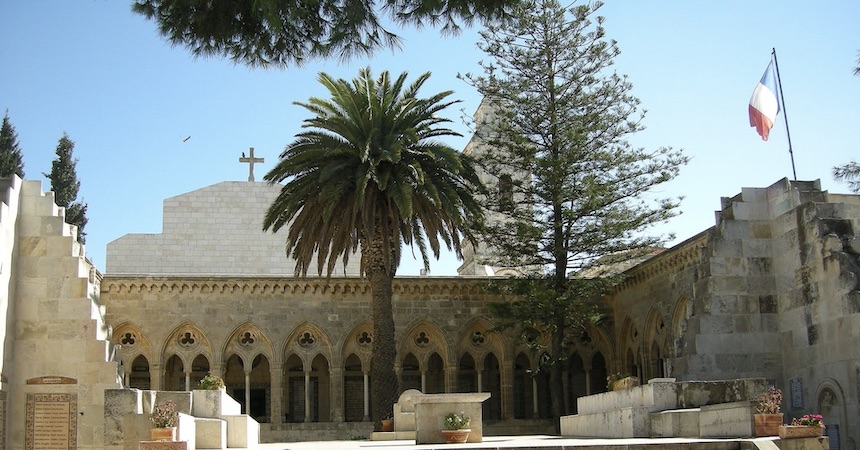
Overview
The Pater Noster Church, nestled in Jerusalem’s Mount of Olives, is steeped in rich history and distinct architectural beauty. It was built on the traditional site where Jesus taught the Lord’s Prayer, Pater Noster, to his disciples, providing it an intrinsic religious significance.
This site is traditionally associated with Jesus’ teaching of the Lord’s Prayer to his disciples, as referenced in Matthew 6:9-13 and Luke 11:2-4.
The church was first established by Saint Helena, mother of Emperor Constantine, in the 4th century, and consecrated in 336 AD. Following its destruction in the 7th century, it remained in ruins until the Crusaders rebuilt it in the 12th century, which was later destroyed again. It wasn’t until the late 19th century that the French Princess, Clothilde, initiated its reconstruction.
Managed by Carmelite nuns today, the semi-constructed church is unique, as its main attraction is not in its completion but its cultural and religious representation. The site houses beautiful mosaics and archaeological ruins, an open testament to its past.
The Pater Noster Church in Jerusalem is renowned for its distinctive collection of plaques that bear the Lord’s Prayer, or ‘Pater Noster,’ in over 140 languages. These plaques are prominently displayed on the walls of the church’s cloister and courtyard, presenting a striking feature of the site.
These plaques serve not only as a linguistic marvel but also as an embodiment of unity and faith, crossing cultural and geographical boundaries. Each plaque, set in beautifully contrasting ceramic tiles, holds the same prayer, but in a different language. From widely spoken languages like English, French, and Spanish, to indigenous languages and dialects, the plaques exhibit a rich global tapestry of human linguistic diversity.
Every plaque represents a community of believers, underscoring the universal reach of Christianity. They highlight the shared connection between all Christians, regardless of their linguistic and cultural differences, reinforcing the uniting message of the Lord’s Prayer. For visitors, the multilingual display becomes a pilgrimage in itself, as they search for the prayer in their own language.
More Resources

